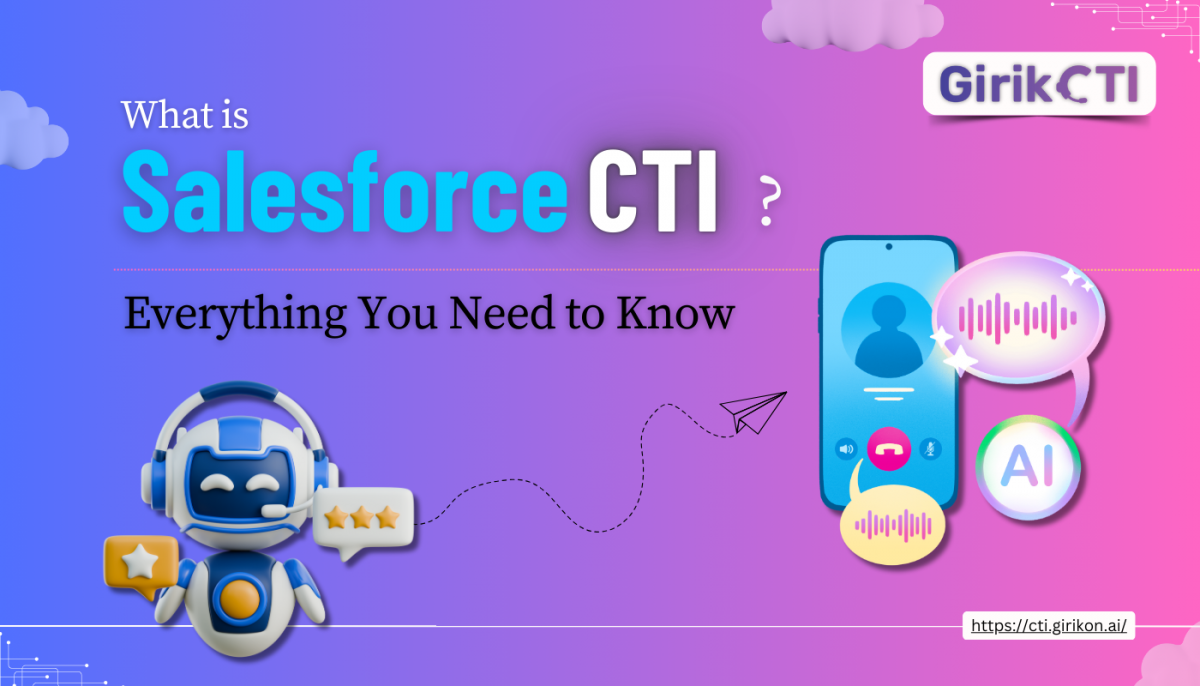Service Cloud refers to a ‘Customer Service’ platform i.e. unique, powerful, and robust customer support application that can be used to track, manage, and resolve customer queries. The platform is built on SaaS (Software as a service) model and can be accessed from anywhere.
Why do we need a Service cloud?
Customer satisfaction is the most important thing for every company and if your company deeply cares about the customer, then Service Cloud should be your go-to platform for all customer service needs. Whenever a customer raises a concern or issue regarding any service of the product to the company, these tickets are received by a service agent following, in which they deal with all the issues efficiently.
Below are some quick points that will clear all your doubts about the service cloud:
24*7 Support: Service cloud provides 24*7 supports to its customers. Customers can raise a query at any point of time that too without any hassle.
Personalized support: The service cloud provides one to one communication between the customer support team member and the customer. Because of this direct conversation, the customer can easily convey their problem and get resolutions while ensuring that the service agent has all the necessary details required to resolve the query raised by the customer.+
Maximize agent productivity: Service cloud can be accessed from anywhere and due to this feature, agents can provide their support from any part of the world through any medium. They are not restricted to work in any particular environment. This helps in increasing the productivity of the agents.
Social Customer Services: The tools for a customer support team to handle cases and support their customers from social channels like Twitter, Facebook, and website. Customers can post their queries over these social platforms and will get the resolution for the same.
Security: Data is a very essential part of the organizations and thus data security and confidentiality hold a lot of significance for organizations. With Service Cloud, organizations can ensure the safety and security of their data.
Features of Service Cloud:
Listed below are some key features of Service Cloud:
Multi-Channel Support: The service cloud provides so much flexibility over a communication medium to its customers. They can email their problem; they can do live chat, make a call, or even can post their problem over social media platforms. Similarly, for resolution, they can choose any medium according to their convenience to discuss with the agent.
Service Console: A service console is a salesforce application for users to work in a fast-paced environment. The console is a dashboard-like interface, where all the information such as customer profile, case histories, etc are complied at a single place. It saves response time for agents as they can quickly find, update, or create records.
Knowledgebase: It is like an online library of service and support information. This feature allows agents to quickly find the solution, and provide them to customers.
Community: Community is a platform made by a group of people to share information and help customers. It is a self-service portal for customers where they can find everything they need, from knowledge articles to user forms and even customer support.
Case Management: Whenever a customer raises a query it can be treated as a case in Salesforce. Case management is necessary for agents to track, manage, and resolve those cases efficiently.
How to access Service Cloud?
Here is how you can access Service Cloud:
Login to login.salesforce.com
Create a Salesforce Console App
Choose its display
Customize push notifications
Grant users Console access- Sc Users
Services provided by Service Cloud:
In-Service Cloud, case tracking or management and knowledge bases is one of the essential features or services.
Case Management in Salesforce:
Taking care of the customers is the most important task and the case management functionality helps in properly managing this aspect. Whenever a customer raises a query in Salesforce it is treated as Case. Case management deals with customer service, providing support and resolutions to their queries.
Case management helps users to record, track, and solve issues of customers. Cases can be created and resolved through multi-channel and it can be further classified into three types:
Email to Case: Email to Case helps you to create a case when an email sent by your company’s email address such as abc@learning.com. These generated cases will be displayed in ‘Email related lists’.
Web to Case: Web to Case allows users to submit Cases directly to the Customer support group by filling a simple web form. Users need to fill some required information in the form i.e. name and Email address.
Escalation and Auto response: Case escalation rules are used to reassign and notify the individuals if a case isn’t closed within a specific time. Also, you can configure auto-respond to the cases.
Use case on Case creation:
Tim is having an issue with his laptop and he needs to get it fixed as soon as possible as he has a meeting in the next 1 hr. Let’s see how he raises a case regarding the problem.
Step 1: Login into Salesforce and select ‘Service’ app
Step 2: Click on the ‘Cases’ tab.
Step 3: Click on the ‘New’ button
Step 4: Fill all the required information on the ‘Case’ window
Conclusion:
In every industry customer satisfaction is very important. Every customer looks for a quick resolution of their issues, and if companies can satisfy the customer with their effective and prompt services, then it can tread a path of success and growth for organizations. Service Cloud allows organizations to collaborate with their customers on a single platform while providing effective solutions to their problems. Service Cloud helps organizations to provide better customer support by providing numerous types of features and services. With the help of these features, service agents can help customers in a better way and can provide them a superior customer service experience.
About Girikon:
As a reputed name in the Salesforce consulting and implementation space, Girikon offers high-quality services to clients across the globe. Over the years, the company has expanded its presence across the globe by establishing offices across UK, Australia, USA and India.
Introduction
CPQ stands for Configuration, Price and Quote.It is a sales tool for companies to provide accurate pricing of the products with any given product configuration. CPQ helps sales rep to provide discounts, increment or decrement in the quantities, customizations on products while preparing the quote. This feature allows sales rep to quote prices quickly and more accurately.
Purpose of the Document
The purpose of this document is to provide the knowledge on CPQ and CPQ product pricing with attributesto the user. In this, user can understand below important topic related to CPQ pricing with attributes:
Introduction of CPQ
Why we need CPQ pricing based on attributes
How can we achieve this?
Benefits of CPQ pricing with attributes
Need of CPQ Pricing based on attributes
In most of the business there will be products which don’t have any configuration. We can easily handle those kinds of products in salesforce because there will be nothing other than products and their Prices. But now a days business and industries are growing rapidly. This growth introduces products with some specific configuration.
For Example: Let’s take the example of clothing industry; according to below table we have a product(Polo T-shirt) and we have some fields with respect to that product (Size, Color, and Price). Here Size, Color and Priceare the attributes of Product. After selecting the product, user need to select the corresponding attributes and their values of the product and user will notice the price will occur once he/she selects all the attributes of the product. Also, if user changes the values of the attributes then Price will automatically change for that particular product.
Product Name
Size
Color
Price
Polo T-shirt
L
White
$25
Polo T-shirt
M
Off White
$30
Polo T-shirt
L
Black
$15
Polo T-shirt
M
Grey
$20
This kind of requirement is difficult to fulfill without CPQ attributes, because user needs to create each product separately with every single attribute. But with CPQ Attributes user needs to create only 1 Product and all the configuration can be mapped to the corresponding attributes.
Configuration Attributes
Configuration attributes are used to gather information during sales and perform some product actions (like showing / hiding / selection products, performing validations / alerting the sales agent) or pricing actions.
A single product can have many configuration attributes, depending upon the variations in their fields.
How to setup CPQ Product Attributes for Salesforce CPQ
Below are the steps for setting up the CPQ product pricing based on Attributes:
Step 1: Create a custom object ‘CPQ Product Attribute’
Fig 1.1
Step 2:Create the required field in the CPQ Product Attribute object, which will be displayed on the Product Attribute
Step 3: Set the Page Layout and Search Layout accordingly
Step 4: Create the required attributes field in the Quote Line Item (SBQQ__QuoteLine__c) object
Step 5:Go to field sets in Quote line object and add the new field in that by dragging
Step 6:Create a Price Rule for copying List Price to Quote Line Item, based on Product Attributes. This will automatically display the List Price on the selection of fields
Step 7:For creating the new product attributes for a product:
Create a product in salesforce
Fig 1.2
Make the Price Book entry at 0 pricing, as shown below
Fig 1.3
Now upload the list of CPQ Attributes from Data Loader into the org, by selecting the object as ‘CPQ Product Attribute’
Fig 1.4
This will create the entries within the CPQ attribute with the entries as uploaded
Fig 1.5
Step 8: Now create an opportunity and choose the pricebook in which you have entered the above products
Step 9:Create a Quote and select the CPQ product. On selection of the product, all its attributes will get displayed. Due to the pricing rule, we will be able to see the list price displaying automatically on the List_Price attribute
Fig 1.6
Use Case:
HTC Media ltd runs a small Media House on a digital platform and publishes one typeof magazine and oneweekly newspaper. They target youth in magazines and children’s in weekly newspaper. They publish their products with different specifications. They earn their revenue based on sale of these products. Customer can take subscription based on their interests.
Product Name
Language
Size
Subscription in Months
Price
Tech Info
English
Full
3, 6, 9, 12 months
$15, $12, $9, $7
Learn & Grow weekly newspaper
English
Full
3, 6, 9, 12 months
$15, $12, $9, $7
Tech Info
French
Full
3, 6, 9, 12 months
$18, $15, $12, $9
Learn & Grow weekly newspaper
French
Full
3, 6, 9, 12 months
$18, $15, $12, $9
Tech Info
English
Half
3, 6, 9, 12 months
$10, $8, $5, $3
Learn & Grow weekly newspaper
English
Half
3, 6, 9, 12 months
$10, $8, $5, $3
Tech Info
French
Half
3, 6, 9, 12 months
$12, $10, $8, $6
Learn & Grow weekly newspaper
French
Half
3, 6, 9, 12 months
$12, $10, $8, $6
According to the table, we have one type of Magazine and one weekly newspaper as product. Language, Size, Subscription in Months and Price are the attributes of the products. As we can see in this table on the basis of attribute, price of the product will generate. If any of the attribute is changed by the customer or user, the price will change.
Now we will try to understand how we will achieve this requirement without CPQ attributes. In order to achieve this, we need to create each product with every single attribute in Salesforce system. So in this scenario, one has to create 32 different entries of products in Salesforce in order to capture every attribute.
Sr. No
Product Name
Price
1
Tech info English Full 3 months
$15
2
Tech info English Full 6 months
$12
3
Tech info English Full 9 months
$9
4
Tech info English Full 12 months
$7
5
Tech info English half 3 months
$10
6
Tech info English half 6 months
$8
7
Tech info English half 9 months
$5
8
Tech info English half 12 months
$3
9
Tech info French Full 3 months
$18
10
Tech info French Full 6 months
$15
11
Tech info French Full 9 months
$12
12
Tech info French Full 12 months
$9
13
Tech info French Half 3 months
$12
14
Tech info French Half 6 months
$10
15
Tech info French Half 9 months
$8
16
Tech info French Half 12 months
$6
17
Learn & Grow weekly Newspaper English Full 3 months
$15
18
Learn & Grow weekly Newspaper English Full 6 months
$12
19
Learn & Grow weekly Newspaper English Full 9 months
$9
20
Learn & Grow weekly Newspaper English
Full 12 months
$7
21
Learn & Grow weekly Newspaper French Full 3 months
$18
22
Learn & Grow weekly Newspaper French Full 6 months
$15
23
Learn & Grow weekly Newspaper French Full 9 months
$12
24
Learn & Grow weekly Newspaper French Full 12 months
$9
25
Learn & Grow weekly Newspaper English Full 3 months
$10
26
Learn & Grow weekly Newspaper English Full 6 months
$8
27
Learn & Grow weekly Newspaper English Full 9 months
$5
28
Learn & Grow weekly Newspaper English
Full 12 months
$3
29
Learn & Grow weekly Newspaper French Full 3 months
$12
30
Learn & Grow weekly Newspaper French Full 6 months
$10
31
Learn & Grow weekly Newspaper French Full 9 months
$8
32
Learn & Grow weekly Newspaper French Full 12 months
$6
As you can see without CPQ attribute it would be a very tedious task for anyone to create products. In this scenario we have only 2 products with limited number of attributes and their values. But what happen if we have many products with multiple different attributes and with different values.
To resolve this kind of complexity, CPQ Attributes functionality comes in the picture.
User need to create CPQ Product Attribute
All the required fields will be created under this object.
Add the same fields to the field in the Quote Line Item object.
Add the required value to the field in CPQ Product Attribute
Add the same value to the field in the Quote Line Item object.
Add the required field in the Price Rule.
Make the Price Book entry at 0 pricing.
Now upload the list of CPQ Attributes from Data Loader into the org, by selecting the object as ‘CPQ Product Attribute’.
As we understood how to set up Configuration Attributes in above section, now we will understand how product will display on Product selection window.
Product listed on product selection window:
Tech info
Learn & Grow weekly Newspaper
All the corresponding Attributes will display on the QLI after selecting the product.
Benefit of CPQ pricing based on Product Attributes:
It is easy to manage the products in Salesforce with the help of CPQ attributes.
As we have seen in use case without CPQ attributes we need to create separate product on the basis of attributes and their values. This problem can be overcome with CPQ attribute.
Easy to generate reports on the basis of attributes.
User can pull the report on the basis of attributes in order to get the revenue information.
Change the Product Prices for a campaign.
User needs to download the existing CPQ Product Attributes sheet and replace the campaign with the new one and update the prices for the respective product.
No need to remember the prices of the product on the basis of attributes and their values.
After selecting all the attributes of the product on QLI, price will come automatically. In this case, user doesn’t remember price of the product.
The view on QLI will be compact with less number of products.
QLI is always manageable with less number of products. Also, it will be easy to select the product when count is less.
Conclusion:
CPQ pricing is, without any doubt is a great feature of salesforce for evaluating the pricing of the products. CPQ pricing with product attributes fulfills the need of a business when market demands a lot of customizations and specifications on any product. CPQ makes it easy for user to manage the products and their prices when different types of attributes are present. User doesn’t need to struggle with the attributes, number of products and how pricing could achieve in salesforce. In a nutshell, CPQ pricing with product attribute is the solution for attributes related issues.
About Girikon:
Girikon is a reputed name in the Salesforce consulting and Salesforce implementation space. Over the years they have carved a niche for themselves by catering to clients requirement by providing them with quality services and solutions.

 +1-480-382-1320
+1-480-382-1320 +44-7428758945
+44-7428758945 +61-1300-332-888
+61-1300-332-888 +91 9811400594
+91 9811400594


















